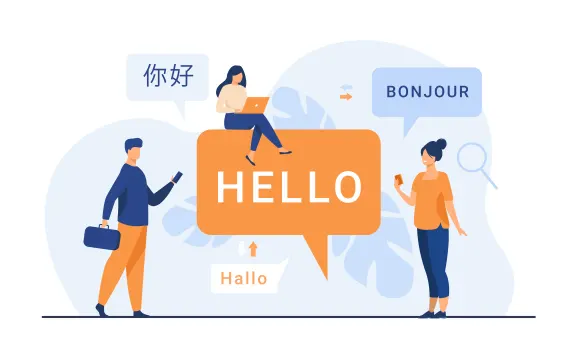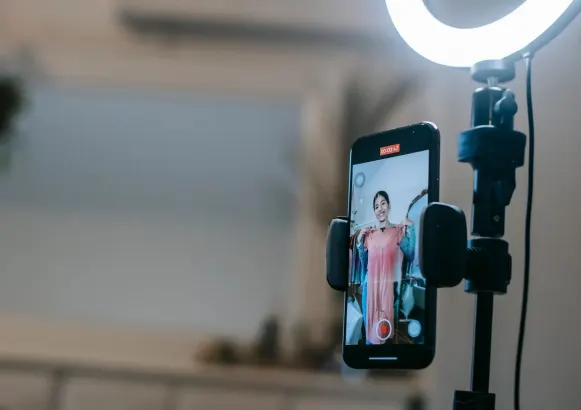See the following links if you'd like to skip to specific sections.
- Introduction: The Power of Global Content on YouTube
- 1. Understanding the Difference Between Translation and Localization
- 2. Why Localization Is More Important Than Ever for YouTube Creators
- 3. Best Practices for Translating YouTube Videos
- 4. Voiceovers vs. Subtitles: What Works Best?
- 5. Localizing Thumbnails, Titles, and Metadata
- 6. Collaborating with Local Influencers
- 7. Tools and Platforms to Help You Localize Your Content
- Conclusion: Go Global or Go Home
Introduction: The Power of Global Content on YouTube
YouTube is the second-largest search engine globally, with billions of users spanning every continent. As the world becomes more interconnected, creators who focus solely on one language or audience miss out on an incredible opportunity to grow their channel. Translation and localization are vital strategies to reach a broader international audience through SEO optimization of translated videos.
Localization, which goes beyond simple translation, involves adapting content for a specific culture or region. For YouTubers, this means tailoring videos to resonate with viewers in multiple countries, breaking through language barriers, and creating a personalized experience for each audience.
In this post, we’ll explore how YouTube creators can effectively translate and localize their videos to expand their reach and increase engagement with global viewers.
1. Understanding the Difference Between Translation and Localization
Before diving into the "how-to" of globalizing your content, it's important to distinguish between translation and localization.

- Translation refers to converting text from one language to another. On YouTube, this includes captions, subtitles, and sometimes voiceovers.
- Localization is a broader concept. It includes not only translating text but also adapting your content to fit the cultural norms, preferences, and expectations of a particular region.
For example, translating your English script into Spanish is great, but what works in Mexico may not work as effectively in Spain. Localization considers these nuances, adjusting slang, humor, or references accordingly.
Key Tip:
Creators should always think about the cultural context. A successful localization strategy acknowledges that humor, idioms, and even visual content (such as gestures) may have different meanings in different cultures.
2. Why Localization Is More Important Than Ever for YouTube Creators
The growing use of smartphones and high-speed internet means that content can be accessed globally, often as easily in Tokyo as it can be in Los Angeles. YouTube is available in 100+ countries and supports 80 languages. This provides creators with an enormous potential audience—but only if they make the effort to reach them.

Localization helps creators:
- Grow their subscriber base in international markets.
- Increase watch time by making videos understandable and relatable to a wider audience.
- Boost ad revenue by attracting viewers from multiple regions, as advertisers often target specific countries.
- Improve searchability on both YouTube and Google, since captions and localized metadata help your video appear in multiple languages.
Key Tip:
Don't just localize for one language. If you already have a loyal English-speaking audience, start by targeting the languages of your top non-English speaking viewership. You can check these analytics within YouTube Studio.
3. Best Practices for Translating YouTube Videos
To successfully translate your videos, follow these best practices:
a) Invest in Professional Translation Services
While automated translation tools like Google Translate can help, they are not foolproof. A professional translator ensures that your message is accurately conveyed in the target language, with proper grammar, syntax, and cultural relevance.
b) Use Subtitles and Closed Captions
Subtitles help bridge the language gap for viewers. They provide an option for viewers to follow along even if they don't speak the original language of the video. Closed captions, in particular, are beneficial as they include additional context such as sound cues and speaker identification.
- Closed Captions (CC) include non-dialogue elements like sound effects or music cues.
- Subtitles focus on translating the spoken dialogue into the target language.
On YouTube, you can upload subtitles for multiple languages, making your video accessible to international audiences.
c) Leverage YouTube's Community Contributions Feature
YouTube previously had a feature where viewers could contribute translations of captions or metadata. Although this has been discontinued, creators can still encourage bilingual viewers to offer translation help in the comments or descriptions.
4. Voiceovers vs. Subtitles: What Works Best?
Some creators may wonder if subtitles are enough, or if they should also consider dubbing their videos with voiceovers in another language.

Here's a breakdown:
- Subtitles are easier and less costly to implement. They retain the authenticity of your voice, which might be important for personality-driven channels.
- Voiceovers provide a more immersive experience for non-native speakers, especially for instructional or educational content. They are particularly useful when your audience may not be comfortable reading subtitles, such as children or older demographics.
Key Tip:
Consider experimenting with both options. Some creators use a mix of voiceovers and subtitles, depending on the content. For example, vlogs might rely on subtitles while explainer videos get dubbed into multiple languages.
5. Localizing Thumbnails, Titles, and Metadata
YouTube's algorithm takes metadata into account when ranking videos. Therefore, localizing the metadata is a key step in ensuring your video appears in search results for users speaking different languages.
a) Localized Titles
When a potential viewer searches for content in their own language, they're more likely to click on videos with titles they can easily understand. Translating your title into the target language increases the chance of engagement.
b) Localized Descriptions
A well-translated description provides a summary of your content that draws viewers in. Make sure it's culturally appropriate and relevant to the specific country or region you're targeting.
c) Localized Tags
Tags help YouTube categorize and recommend your content. Use keywords in different languages to improve visibility in searches across multiple regions.
d) Localized Thumbnails
Sometimes, a thumbnail that works well for one culture may not resonate in another. For example, certain colors, symbols, or even facial expressions might have varying connotations in different regions. Customizing thumbnails can enhance your video's appeal to international viewers.
6. Collaborating with Local Influencers
Collaborating with local creators is a great way to tap into a new audience.

Consider teaming up with influencers or creators from the region you're targeting. This gives your channel credibility and helps you connect with viewers on a deeper level, especially if the influencer is a trusted figure within that community.
7. Tools and Platforms to Help You Localize Your Content
Several platforms and services make it easier for creators to translate and localize their content:
- Rev.com: Provides translation, transcription, and subtitles for videos.
- Amara: A platform that offers subtitle and captioning services, including multilingual support.
- Unilingo: A service that specializes in localizing YouTube content, including subtitles and voiceovers, into various languages.
Conclusion: Go Global or Go Home
In an increasingly globalized world, localizing your YouTube content is a powerful way to expand your audience and build a global community. While the process requires effort and investment, the potential rewards are vast: a larger subscriber base, more engagement, and an increase in ad revenue from international markets.
Creators who successfully embrace localization aren't just making their content more accessible—they’re creating a personalized experience for viewers around the world. Whether you're just getting started or are already an established creator, now is the time to take your content global.
Read Next
The following articles are related to 7 ways youtube creators can expand reach with localization.




